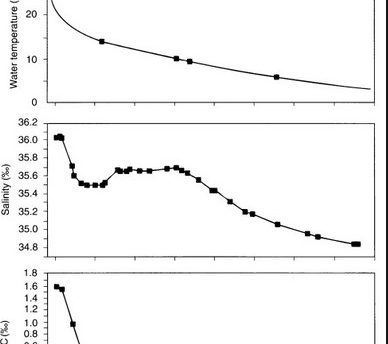
The fifth and final component of the global climate system is the geosphere, consisting of the soils, the sediments and rocks of the Earth’s land masses, the continental and oceanic crust and ultimately the interior of the Earth itself. These parts of the geosphere each play a role in the regulation and variation of global climate, to a greater or lesser extent, over varying time scales.
Variations in global climate over tens of millions or even hundreds of millions of years are due to modulations within the interior of the Earth (Pickering & Owen, 1994; Raymo & Ruddiman, 1992; Ruddiman & Kutzbach, 1991). Changes in the shape of ocean basins and the size of continental mountain chains (driven by plate tectonic processes) may influence the energy transfers within and between the coupled components of the climate system.
On much shorter time scales physical and chemical processes affect certain characteristics of the soil, such as moisture availability and water run-off, and the fluxes of greenhouse gases and aerosols into the atmosphere and oceans (Cubasch & Cess, 1990; McBean & McCarthy, 1990). Volcanism, although driven by the slow movement of the tectonic plates, occurs regularly on much shorter timescales. Volcanic eruptions replenish the carbon dioxide in the atmosphere, removed by the biosphere, and emit considerable quantities of dust and aerosols (see section 2.6.3). Volcanic activity can therefore affect the energy budget and regulation of the global climate system (Sear et al., 1987).




Leave a Reply